Vineyard Profile: Burnt House Vineyard
19th October 2023
Brother-and-sister team, Catherine and James Scarff are fourth-generation farmers, who have successfully diversified part of their arable acreage into a successful vineyard with a stunning tasting room; and they have even bigger ideas for the future.
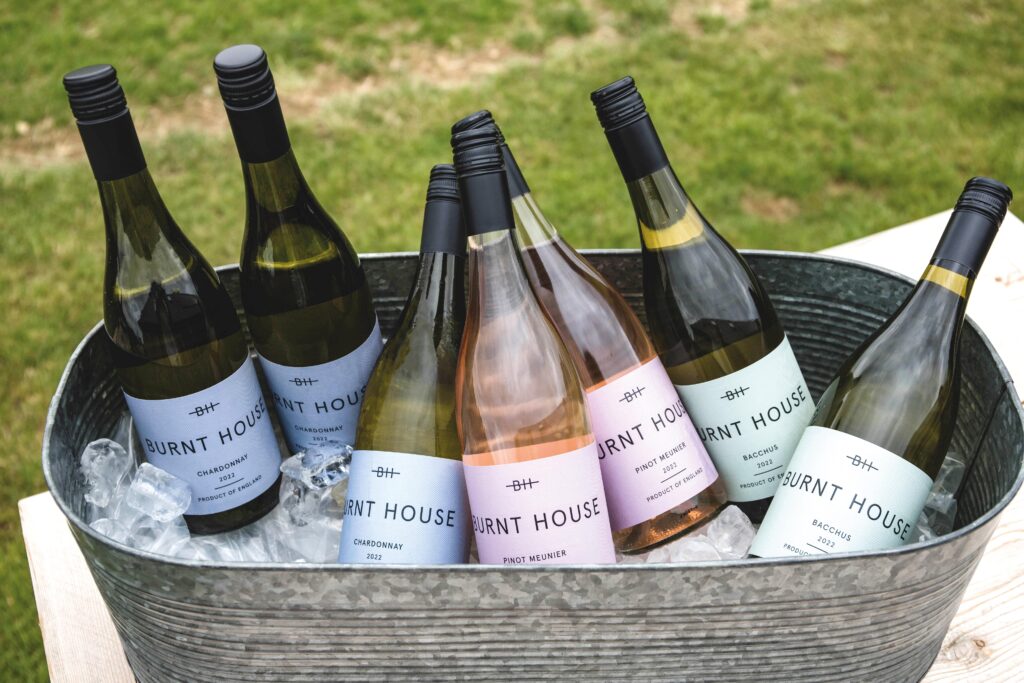
Vineyard profile:
- Grower : Burnt House Vineyard
- Location : Situated in the village of Little Finborough, near Stowmarket, Suffolk
- Vineyard size : 8.59ha under vine
- Soil type : Clay
- Aspect : South facing gentle slope. Rows are planted north to south
- Varieties : Chardonnay, Pinot Noir, Pinot Meunier and Bacchus
Tucked along a quiet country road near Stowmarket, Burnt House Vineyard is best viewed from namesake Burnt House Lane, which offers a spectacular vista of the whole site – you can see from one end of the vineyard to the other, with a beautiful, ancient oak tree in the middle.
With the arable enterprise run by James, the pair co-manage the vineyard, assisted by a passionate, hand-picked team. Meanwhile, Catherine oversees the wine and hospitality/tourism aspect of the cellar door/tasting room.
“Our great great grandad started the original farm at Combs,” Catherine says. “It was passed down to us by our dad Stuart, and mum Jill, who are also both very much involved in the vineyard – mum with accounts, and dad on the growing side.”
In fact, it was their dad Stuart who first suggested a vineyard as a potential diversification for part of the farm. “He’s always had a passion for wine,” explains Catherine. “It was one of a few diversification options we were considering, and in 2017 we decided to go for it.”
Planted on a gentle slope, leaning towards the picturesque oak tree, the main vineyard (containing varieties aimed primarily at the sparkling market) was established in two stages during 2017 and 2018, with a second, smaller planting of Bacchus added behind the original farmhouse in 2019.
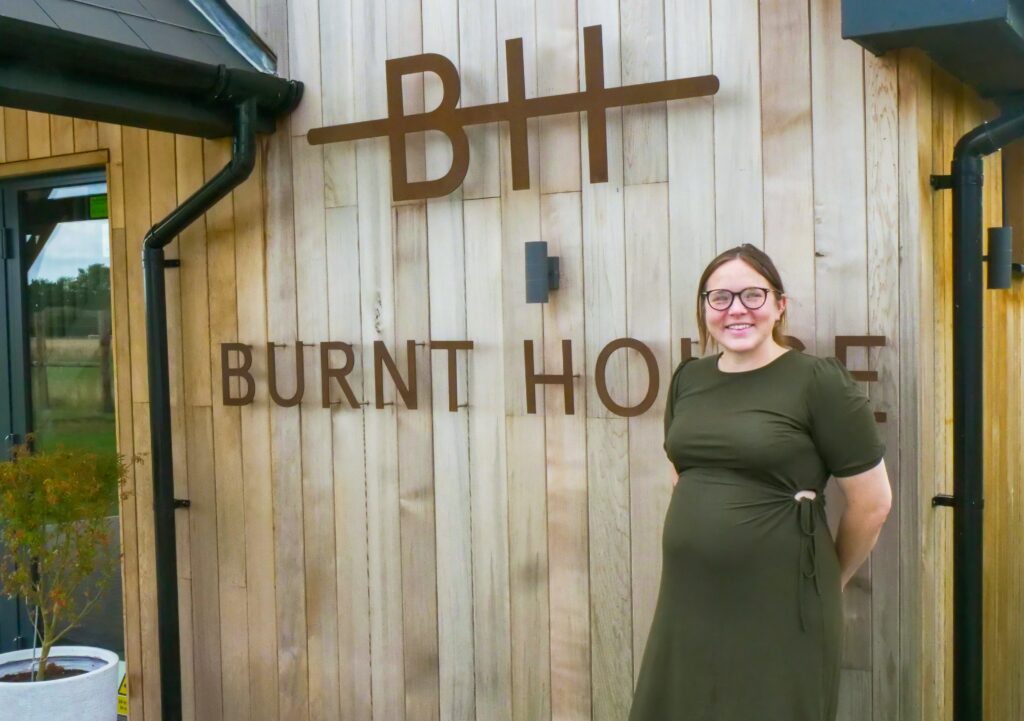
Catherine Scarff (pictured) runs the vineyard with her brother, James Scarff.
Commercial operation
For the original vineyard, James and Catherine employed VineWorks as consultants, and to manage the planting, as well as install the single guyot/VSP trellising system. “They were the stand-out option of the various companies we spoke to prior to establishing the vineyard. I had a lot of faith in VineWorks owner James Dodson,” says James.
“He recommended planting sparkling varieties due to the level of demand within the industry, but also encouraged us to do our own research. I ended up contacting so many different wineries, gauging the level of interest, and we had a number of contracts on the table before finally deciding on an agreement to supply Ridgeview Wine Estate.”
In order to meet the contract demands, they opted for a 50:35:15 split of Chardonnay, Pinot Noir and Pinot Meunier.
While up to 90% of the crop is currently sold on contract, in order for the vineyard to establish its own identity, the siblings decided to build their own tasting room, and begin selling their own wines.
The modern, cedar-clad, slate-roofed tasting room, which was designed by Whitworth Co Partnership, was funded in part by an RDP grant. The light-filled building sits just in front of the vines, and offers a selection of carefully chosen and locally-sourced cheeses, meats, breads, and more – tasting platters designed to complement the wines.
They opened the cellar door in August 2022 with a limited number of bottles of their 2021 Bacchus, and sold out of this first release by that Christmas.
Victims of their own success, this year they have produced more than five times as many bottles – a significant level of growth in such a short time, but Catherine is already feeling nervous that they won’t have enough to see them through until next year. “It’s a great position to be in,” she says. “But now we need to focus on ensuring production levels can meet demand – both now and in the future.”
The majority of the marketing for the cellar door sales, tours and tastings is done via social media, plus a local wine merchant, as well as a couple of restaurants currently include Burnt House on their wine lists.
A high-end Air BnB also includes the vineyard’s wine in its welcome hampers. This is an area that Cat is looking to expand, so they have recently hired someone to focus on marketing, in particular in terms of on trade/off trade sales.
WIth demand outstripping supply, the duo is making plans to increase the size of the vineyard over the next couple of years.
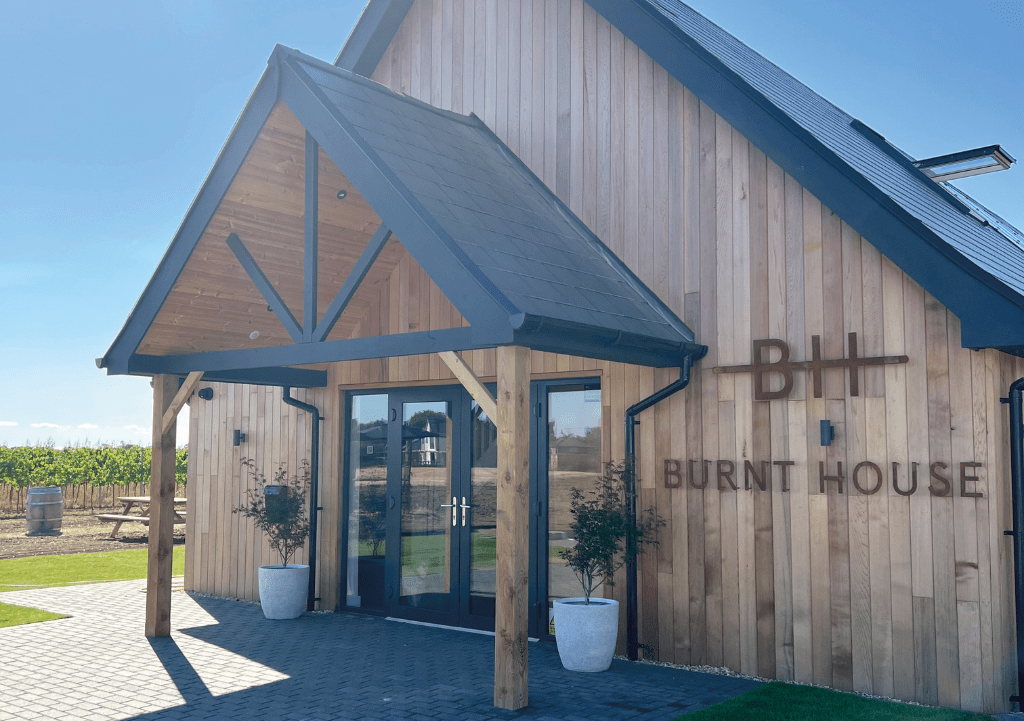
The modern, cedar-clad, slate-roofed tasting room, which was designed by Whitworth Co Partnership, was funded in part by an RDP grant
New plantings
As James and Catherine move into the next phase of the business, looking to produce more of their own wines, Catherine says the new plantings are likely to be the same varieties, but this time they will predominantly be clones that are suited for still wines rather than sparkling. This decision has been made both because Burnt House has already launched a number of wines in that range, but also because if they have a surplus one year, Catherine says it’s far easier to sell those into a contract rather than choosing more obscure varieties, such as piwis, which would have far less appeal from a commercial perspective.
However, James points out that they have another two years to decide, so will assess this depending on what the demand is like at the time. Currently time is on their side – and, for now, focusing on the current vines and the Burnt House brand is the most important element.
James says a key lesson they learned from their initial planting is that they wouldn’t leave such a wide gap at the end of the field – the current vineyard has a 40m unplanted strip at one end which they previously left to grass following an initial climatologist report which suggested that there could be a frost risk within that pocket.
“I wish we had continued the planting into that area, as frost hasn’t caused much of a problem to date, and even if some yield had been lost to frost, it would be preferable to having a significant amount of grass to cut,” he explains. “This time around, I reckon it would be better to make use of every hectare of the field.”
However, as Catherine points out, as they are looking to expand into offering events and weddings in the future, this area has given them a great space to be able to do that.
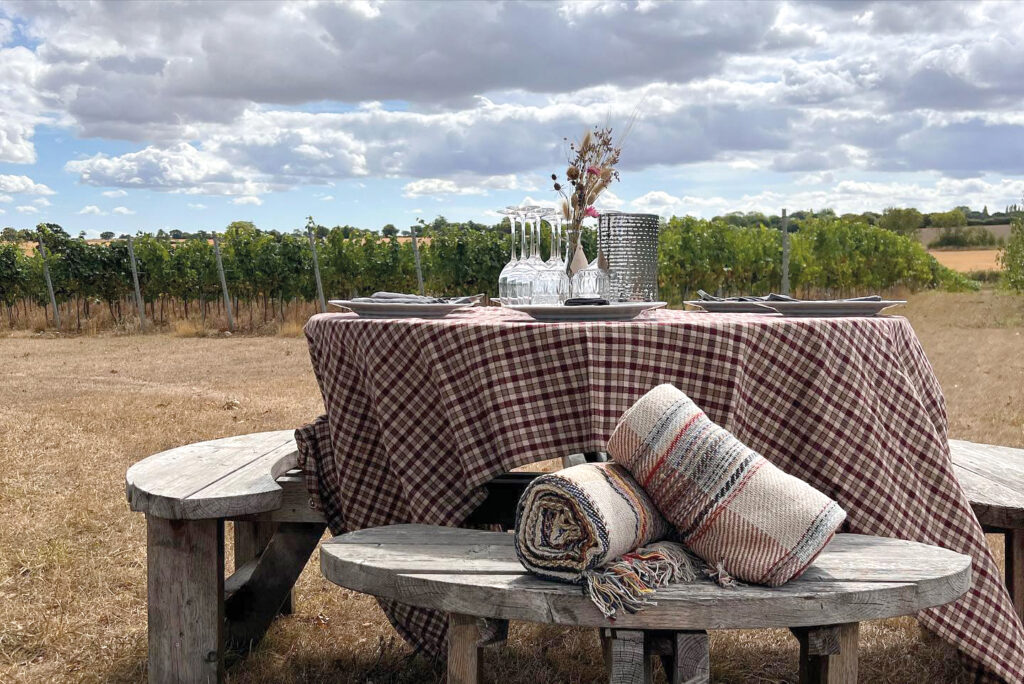
From picnics and pizza in the vines to wellness classes, a variety of events are already being held at Burnt House Vineyard.
Taking elements in-house
As well as purchasing grapes under contract, Ridgeview also produces the Burnt House sparkling wine using the Traditional Method – the first vintage of which is currently ageing on lees.
Burnt House Bacchus, Chardonnay, Pinot Meunier rosé and Pinot Noir still wines are made by Defined Wines, and have been incredibly well received by visitors.
Despite being hands-on and keen to be involved in all elements of their wine production, James and Catherine don’t feel that building their own on-site winery would be feasible – although they are considering the practicality of bringing certain aspects of the production process in-house.
This would provide more work over the quieter winter months, and allow the vineyard to take on more full-time staff – with local permanent job creation for 12 months of the year rather than just seasonal being something that James and Catherine feel passionate about.
“But in order to undertake this level of investment, both in terms of time and money, we would need to ensure we do our homework – as we have done with all other aspects of the business,” comments James.
“We managed to get a grant for diversifying into agricultural tourism for the tasting building, and will keep an eye out for any available grants for a cold storage and production line building – for me, it’s a case of waiting for the right grant to come along. In the meantime, the plan is to get the planning permission agreed, and then we can sit on it until the time is right.”
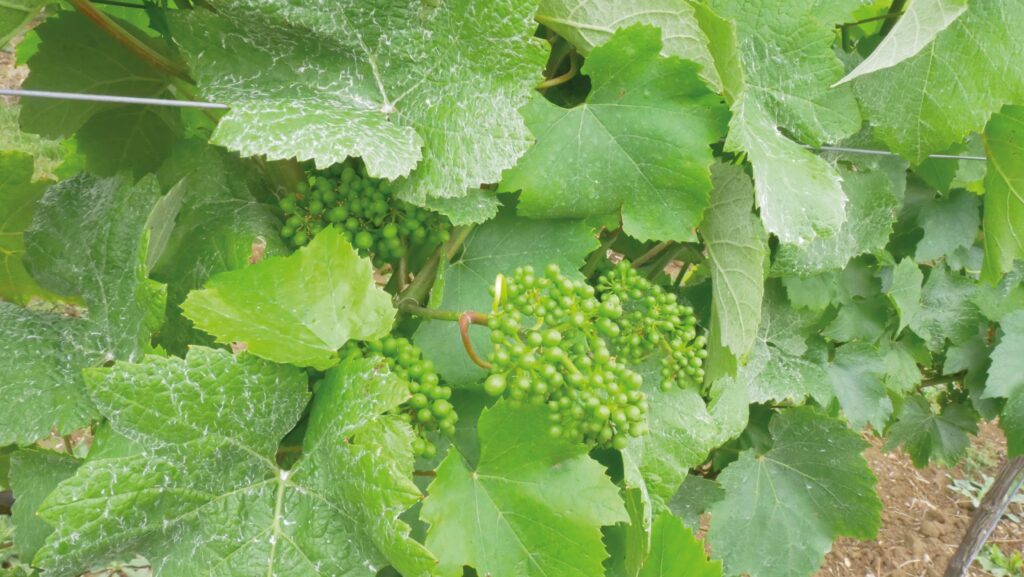
Catherine and James grow Chardonnay, Pinot Noir, Pinot Meunier and Bacchus at Burnt House Vineyard.
Grant advantages
The vineyard also managed to obtain four frost fans under the Leader grant back in 2017, which James and Catherine imported themselves directly from Australia.
So far, the vineyard has only suffered minimal frost damage in 2021, where there was a pocket of frost damage of around 2% seen – but what followed was their biggest harvest to date, so it didn’t impact the business, Catherine explains.
“The fans are the only frost protection we would consider using,” says James. “While effective, bougies are too time- and labour-intensive for a vineyard of our size, so they’ve never really come into the equation.”
The fans were analogue when they arrived, but James has since had them updated and digitalised.
There are four Sencrop weather stations around the vineyard – two Leaf, a Wind and a Rain – which they primarily use for weather modelling, and also piggy-back onto the weather station data network from another farmer in the Bury St Edmunds/Woolpit area, which all helps to manage and mitigate weather risks.
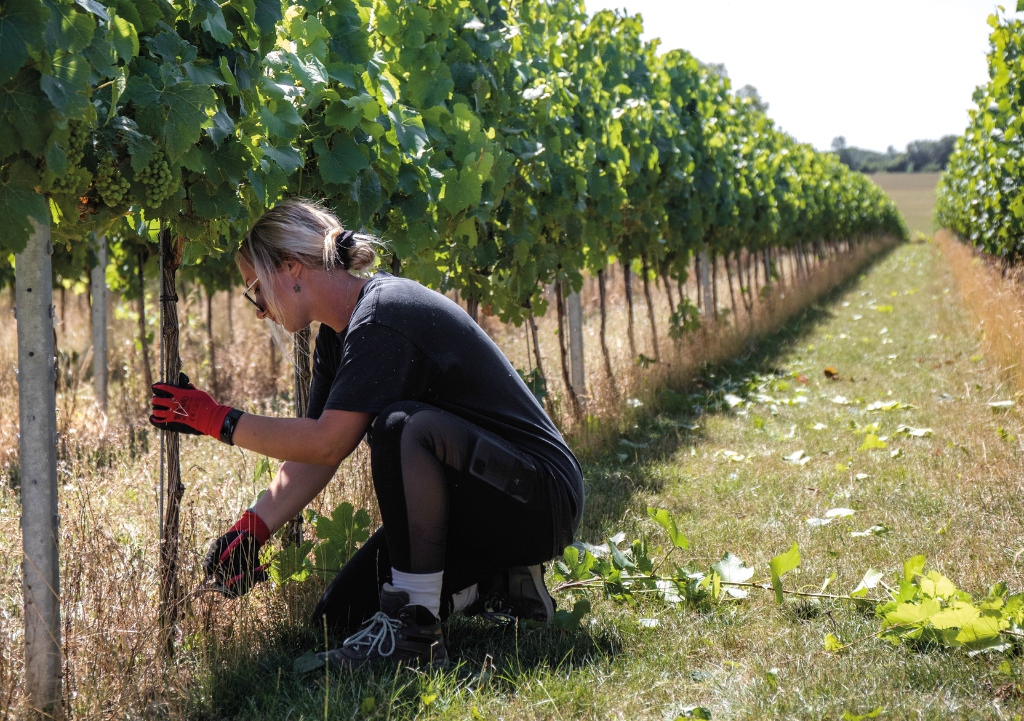
Prunings are currently mulched back into the soil.
Healthy soils, healthy vines
The land under the current vineyard was originally used for combinable crops, which was min-tilled and direct-drilled with a Sky EasyDrill – so the clay soil was really healthy prior to the vines being planted. It was newly drained before planting in 2017, with modern plastic drains.
Since the initial soil sampling that was carried out before the vines were planted, James and Catherine haven’t been regularly soil testing, instead choosing to leaf test; but now they’re in the process of making a move into the Sustainable Wines of Great Britain scheme, they intend to conduct annual soil testing as part of the sustainability audit.
Regular leaf testing allows James to deal with any nutritional needs in a timely fashion. “We use Force, which is phosphate-heavy, as a nutritional boost which also works well against mildews, along with magnesium and bitter salts,” he explains.
He also uses seaweed-based biostimulant Maxicrop, tank mixing it with pretty much every spray. “You can visually see the vines respond to it. I’m a firm believer in seaweed-based biostimulants, particularly for younger vines, as they’re packed full of goodness and really help to give a boost to the vines at the start of their life,” James says.
Prunings are currently mulched back into the soil – James and Catherine removed them one year, but James says it was such a nightmare when the ground was wet, and explains that mulching makes sense for the soil given the robust disease management on the vineyard.
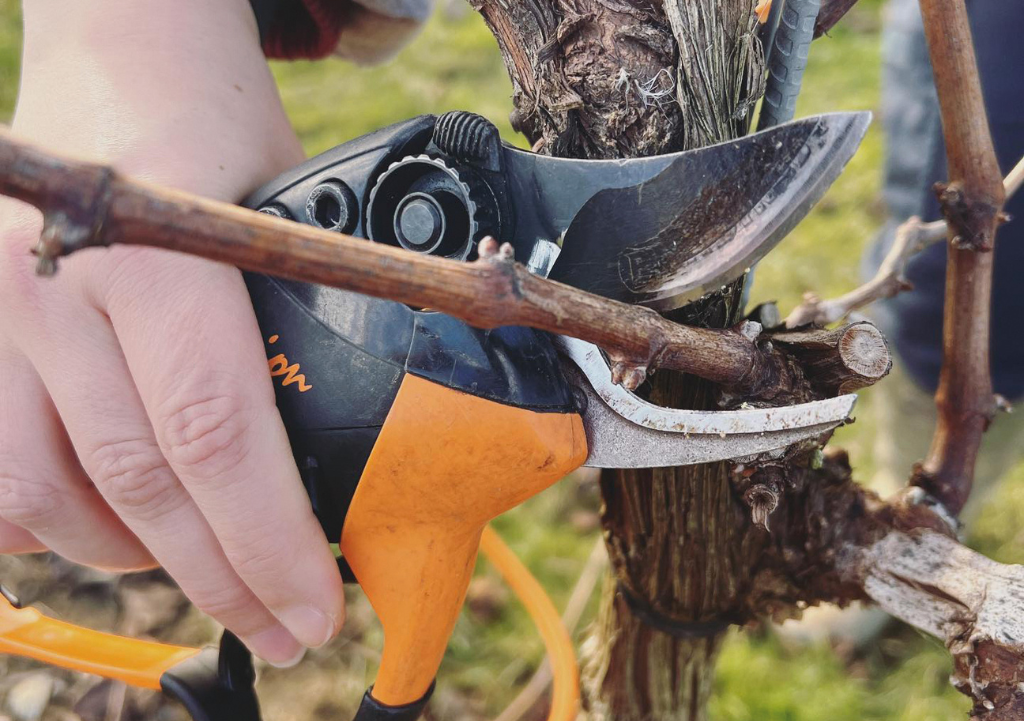
Catherine and Anna completed a Simonit & Sirch course, before teaching their whole team the principles and pruning methods.
Pest and disease control
Burnt House works with Hutchinsons agronomist John Chapman, who is based down the road at Needham Market – he visits every two weeks and provides the ag-chems used by the vineyard, along with any advice James and Catherine need when it comes to the health of the vines.
Disease is kept under control with a robust spray programme, so causes very few issues currently.
Deer are the most significant large pest, so James and Catherine installed a specialist fencing system around the vineyard – although part of this was removed when the tasting building was built, so needs to be replaced as deer have recently reappeared and begun nibbling the vines.
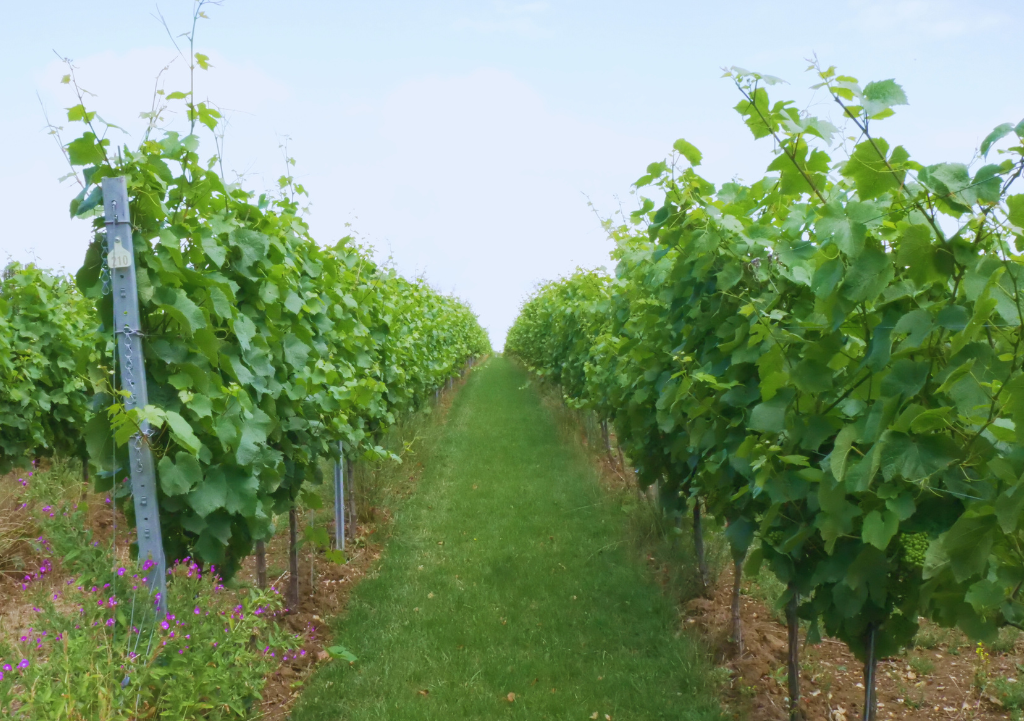
James and Catherine plan to establish a cover crop to increase biodiversity on site.
Increasing biodiversity
None of the vineyard is in any form of Countryside Stewardship, as this would prevent them from cutting the grass – which, says James, is a key control technique for frost management.
They intend to establish a cover crop, as currently every other row is bare and the alternate row is laid to grass – so James and Catherine are looking at cover crop mixes with a view to increasing both biodiversity and improving soil and vine health, as well as introducing some wildlife habitat elsewhere on the site.
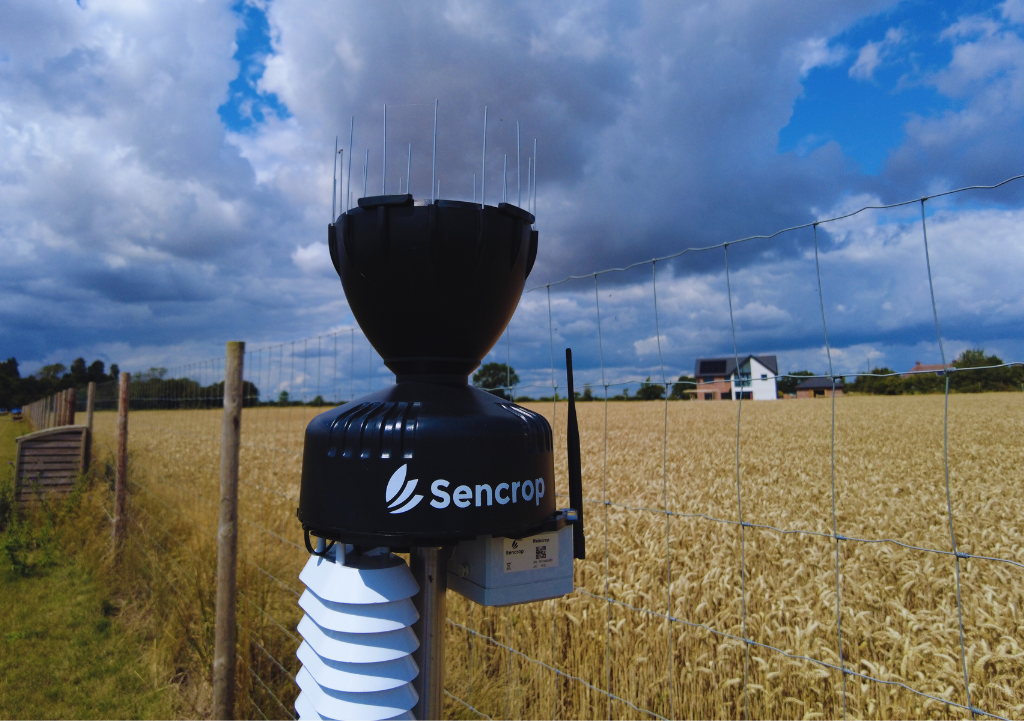
A Sencrop weather system is installed to allow James and Catherine to monitor weather conditions.
Quality preferred
James sources tractors for both the farm and vineyard from local dealer Tuckwells, while they purchase vineyard-specific kit via a third party in Germany primarily.
James is a firm believer in buying better quality kit from the outset, as he says you’ll appreciate the benefits in the long run. “Reliability is essential, and although it’s easy to be blinkered by costs when coming up with an initial business plan, grapes are such a high risk, high reward crop, cutting corners just can’t be done – do it right the first time, and quality will take care of the bottom line.”
The vineyard has recently invested in a piece of kit to aid with bud rubbing; although due to initial customs issues and subsequent delivery timings, they’ve not been able to try it out yet.
But, Catherine explains, now the ground has settled, they’re intending to use the Braun under-vine bud rubber as soon as practicably possible; not only to manage the shoots and buds, but also to assist with weed management under the vines.
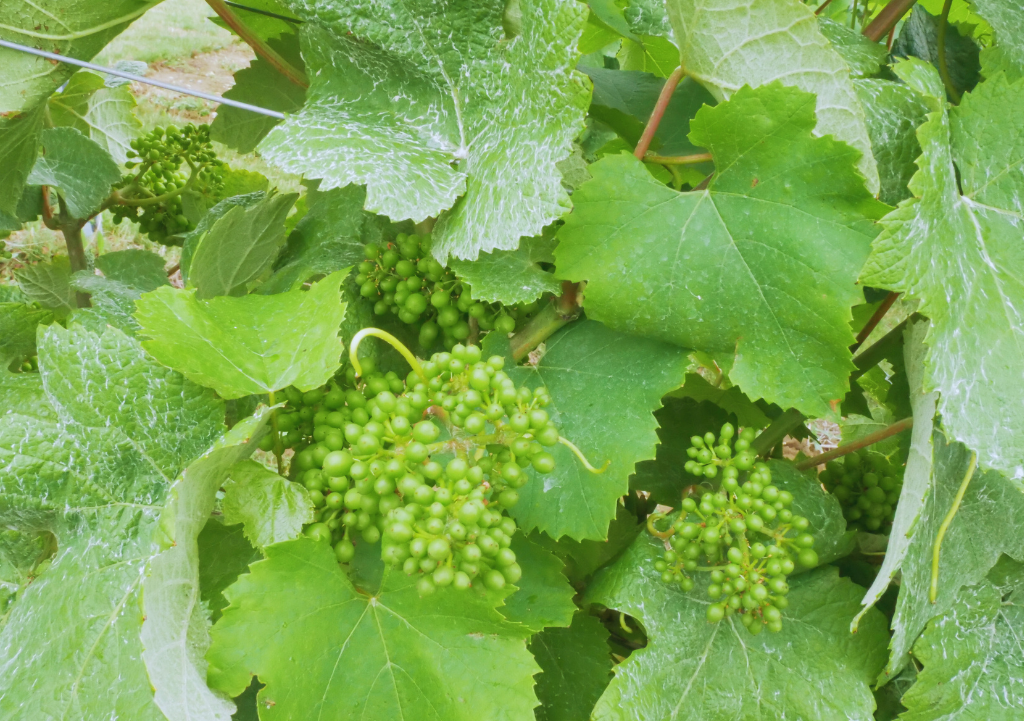
Yielding well
Yield forecasts this year are looking extremely good – in fact, the Burnt House team are now about to begin green harvesting the Pinot Noir and Chardonnay to enable the vines to support the growth, as the vines have very large bunches this year and are sitting too heavy. The Pinot Meunier however is looking a little more even.
Anna, who is on the Plumpton College viticulture apprenticeship scheme, assists with pruning, and last year Catherine and Anna completed a Simonit & Sirch course, before teaching their whole team the principles and pruning methods. This means they can fully manage the pruning in-house. As Catherine points out: “This has really helped the longevity of the vines, and you can already see the difference.”
Bud burst can vary on the site depending on the year – from around middle of April to the beginning of May, depending on the climate. Likewise for veraison, this can vary from year to year and usually occurs between the beginning and the end of August.
The grapes are hand-harvested; Catherine recruits locally for labour and employs directly through the company. “We start our recruitment drive at the end of July in preparation. We aim to pick around 12 tonnes a day so need a large number of workers to be able to achieve this,” she explains.
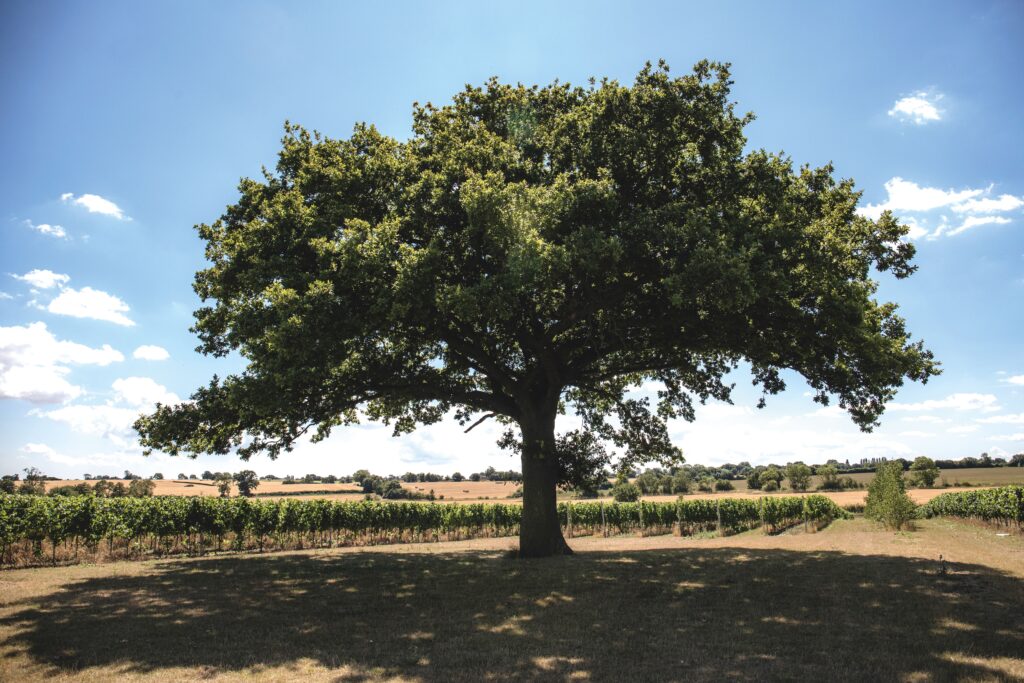
This ancient oak in the centre of the vineyard provides the perfect setting for events.
Looking ahead
Burnt House already offers ‘picnic under the vine’, experiences, where guests collect a picnic basket from the building, and are given a numbered picnic spot under the oak tree.
This is also where the ‘dine in the vine’ experience takes place – while they don’t operate a permanent kitchen, James and Catherine put on special events with a number of different external food vendors and chefs, where guests can enjoy the Burnt House wines with a meal outside.
Weddings are next on the list – with such a beautiful setting and delicious wines on hand for guests to enjoy, it would be rude not to, after all…
